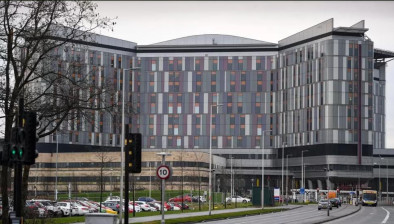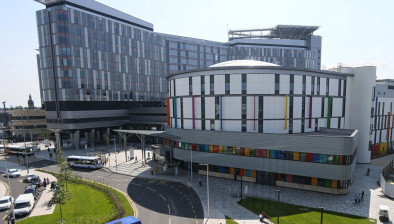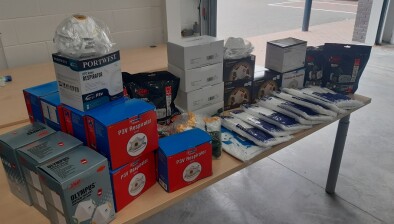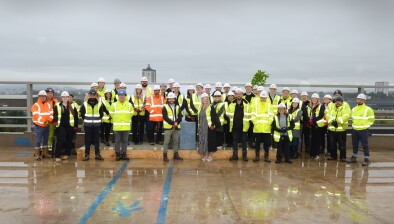Cladding to be removed from Queen Elizabeth University Hospital
 Cladding similar to that found on Grenfell Tower in London is to be removed from Glasgow’s Queen Elizabeth University Hospital (QEUH) as a precautionary measure.
Cladding similar to that found on Grenfell Tower in London is to be removed from Glasgow’s Queen Elizabeth University Hospital (QEUH) as a precautionary measure.
It was revealed last month that Kingspan Kooltherm K15 insulation boards, the same material discovered in the Grenfell block, were fitted to the super-complex in Govan.
A devastating fire tore through the 24-storey west London block in June, claiming the lives of at least 80 people.
The Ministerial Working Group overseeing a review of building and fire safety regulatory frameworks following the tragic fire held its fourth meeting yesterday chaired by communities secretary Angela Constance and involving housing minister Kevin Stewart, health secretary Shona Robison, Scottish Government officials and the Scottish Fire and Rescue Service (SFRS).
The group was updated on the latest actions being taken by the Scottish Government, local authorities, the NHS, the fire and rescue service as well as other building owners across the country, including continued progress made by the fire and rescue service in carrying out fire safety visits.
As part of the update on the series of robust further forensic checks that are continuing to take place across Scotland, including the NHS estate, the group heard that some ACM cladding has been found on parts of the Queen Elizabeth Hospital in Glasgow. The SFRS reassured ministers that as part of its regular risk based audit programme, it had carried out fire safety audits within the Queen Elizabeth University Hospital, which were found to be satisfactory.
Further discussion on this took place immediately after the meeting and as a precautionary measure, NHS Greater Glasgow and Clyde (NHSGGC) have decided to remove the sections of cladding.
Angela Constance MSP said: “The group met again to continue our thorough review of our regulations and take any action needed. Our work programme remains evidence-led to ensure the highest standards of building and fire safety is in place across Scotland.
“We had a very detailed discussion on automatic fire suppression systems, including sprinklers, and I have commissioned a detailed inventory of the high rise domestic building stock in Scotland to ensure we have as clear a picture as possible of ways in which to improve fire safety for residents.
“While we remain confident that we have stringent building and fire safety regulations we cannot afford to be in any way complacent. That is why detailed and robust checks continue across Scotland to assess buildings. Where further investigation is needed it will be carried out to reassure people that adequate fire protection measures are in place.
“I’d like to again give my thanks to all local authorities, the fire and rescue service, NHS Scotland, housing associations and numerous other building owners across Scotland who are continuing to work extremely hard at the moment to carry out these checks and provide that reassurance to the public.
“We’ll continue this partnership to ensure collectively we are doing our utmost to reassure members of the public of the safety of Scotland’s buildings.”
Shona Robison MSP said: “Patient safety is paramount and that is why further forensic checks are currently taking place across the whole NHS estate in Scotland.
“Following the identification of a type of ACM on the QEUH of a similar type to, but not the same as Grenfell, I am reassured that NHS Greater Glasgow and Clyde have decided that the material is should be removed as a precautionary measure.”
David McGowan, assistant chief officer at Scottish Fire and Rescue Service, added: “The Scottish Fire & Rescue Service have reassured Ministers that as part of its regular risk based audit programme, it had carried out fire safety audits within the Queen Elizabeth University Hospital, which were found to be satisfactory.”
The group also discussed the latest evidence on automatic fire suppression systems and agreed that further research will be carried out to evaluate specific risks in high rise domestic buildings, consider the most vulnerable groups and recognise advances in technology.
The first aspect of this work will be to commission a detailed inventory of design features of all high domestic buildings in Scotland to provide an evidence base to assist future work in this area being considered by the building standards working group.

















